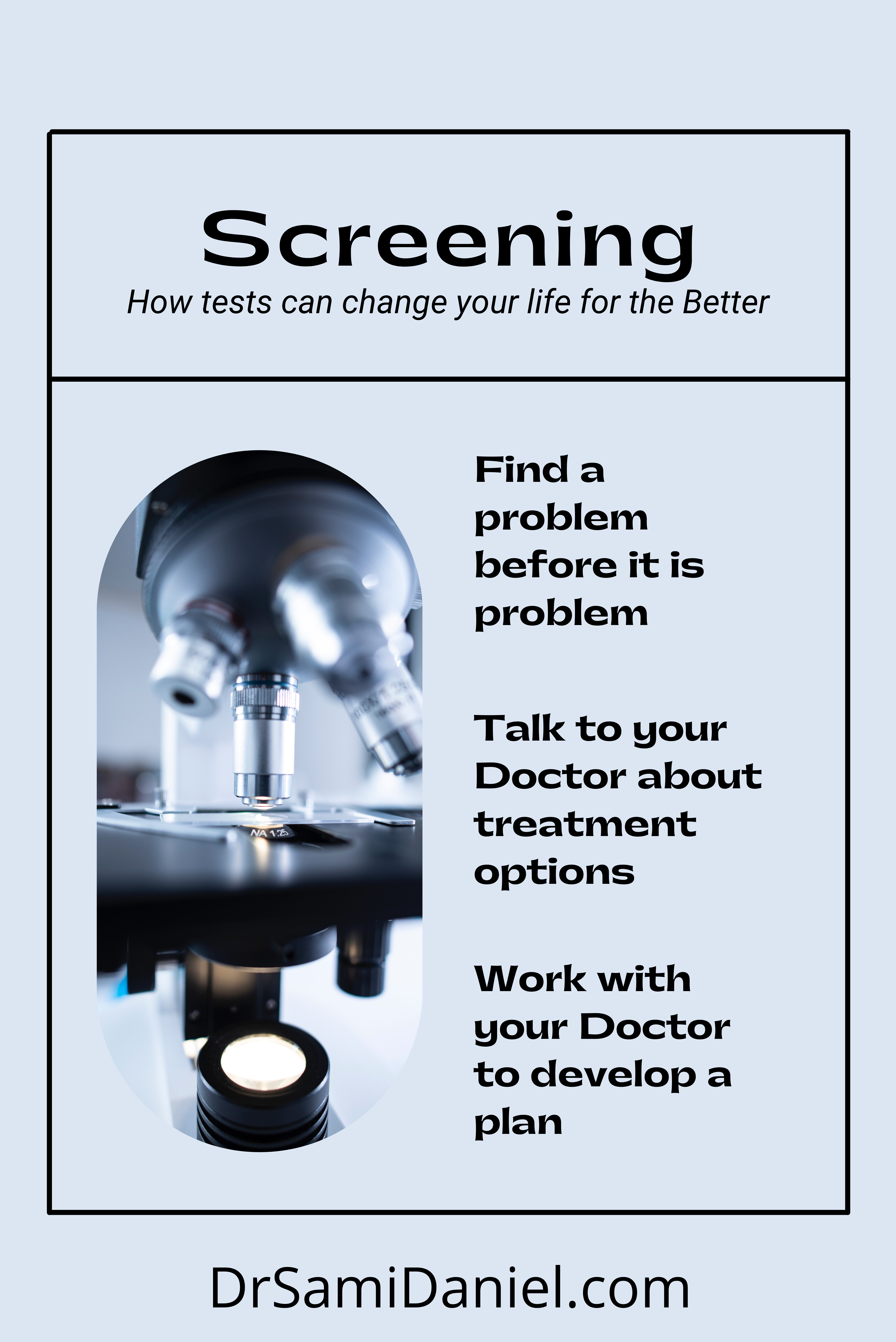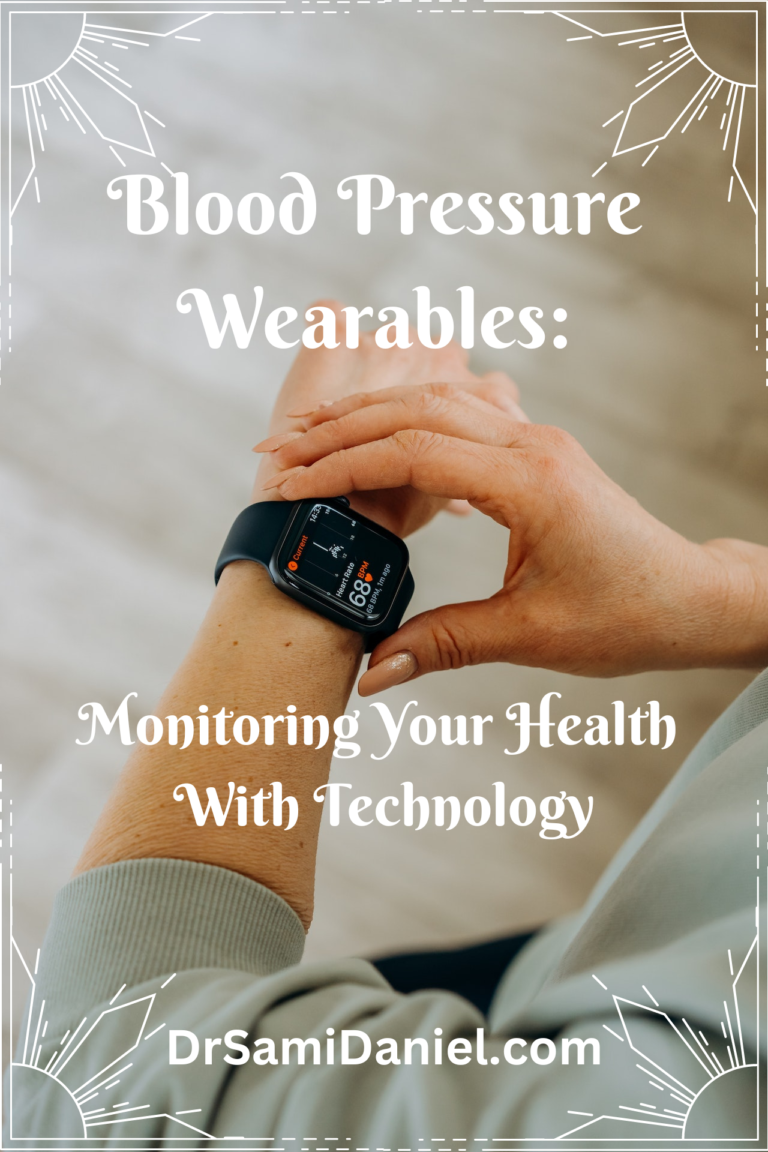How Screening Tests Can Change Your Life For the Better
“Every battle is won or lost before it is ever fought.” ~ Sun Tzu
You go to the Doctor’s office today thinking it’s going to be a breeze! You have no complaints. In fact, you feel great! But you’re going to visit the Doctor today for an annual exam.
You’re betting that the Doctor will ask you a few questions, do a full physical exam, put in some lab orders to check your blood for a few things, then call it a day. Easy! Right?
Well… don’t run out the door too fast. The Doctor may put in orders for certain screening tests depending on your age. Things like mammograms, pap smears, colonoscopies, prostate screening, glaucoma screening, and osteoporosis screenings are a few things that may be suggested to you.
What are they? Are these tests really worth the humiliation and possible pain people endure?
The Purpose of Screening Tests
Your Doctor does not simply throw in these tests for fun. There is a purpose behind them. They help to gather more information about your body. And just like the blood tests, their purpose is to detect a problem BEFORE it becomes a real problem.
Screening tests are often the best way to see if there are any issues that might become problematic. If so, we can take steps now to prevent an undesirable outcome and/or promote a more advantageous one. To learn more from Johns Hopkins Medicine, click here.
In this way, we can follow Sun Tzu’s words of wisdom by surveying the field and increase the chances of winning the battle with awareness, knowledge, and a strategic game plan.
What are the Types of Screening?
There are screenings for several things. But they all attempt to answer a common question; Is there a potential problem?
Mammograms, pap smears, colonoscopies, and prostate screenings all attempt to identify the potential for cancer. It’s no secret that cancer exists in the world. And we are likely to know somebody who has had to fight it. We have seen the emotional turmoil created within families by such diseases.
Such problems cannot always be found before they strike. However some CAN be found and treatment administered before it has the chance to get out of hand.
Therefore we must consistently work to find what we can whenever possible because the fight is a lot easier when focused on prevention.
Glaucoma and osteoporosis screenings attempt to identify preventable diseases of the eyes and bones.
- Glaucoma is a disease that causes permanent blindness because the pressure is too high in the eyeball. There is very little warning and yet the problem is entirely preventable. Therefore a yearly screening helps to mitigate that risk by finding the problem early and using simple eye drops.
- People often know of osteoporosis and the increased risk of fractures. Undergoing a DEXA scan helps to identify what parts of the skeleton are weakest and more prone to fracture. Increasing physical activity such as walking and taking vitamin D with Calcium may help improve bone strength and reduce the possibility of fractures.
And there are more screenings! Screening for thyroid, cholesterol, diabetes, hepatitis C, and Vitamin D levels are just a few more things your Doctor may test to determine your overall well-being.
What is the Difference Between a Screening Test and a Diagnostic Test?
The Doctor may have sent you for a screening test. If the result was “abnormal”, the Doctor may then send you for further testing; usually a diagnostic test. What does this mean?
A screening test is a test designed to capture any possibility of a problem. It’s like putting up a screen and seeing what sticks. So while the test is great at finding anything under the sun, it’s not always the best at figuring out what was found if something shows up.
It’s like looking for a needle in a haystack. Hay and needles look roughly the same. So even if you found a needle-shaped object, you might not be able to identify it as a needle without further analysis. And that additional analysis requires scrutinizing the difference between straws of hay and needles.
In that way, you can tell the difference because needles are usually made of metal, pointy on one end, and a threading loop on the other. Whereas a straw of hay is not made of metal, likely more pliable, and doesn’t always come to a single point on one end. So in essence, with extra testing, you have determined the difference between a straw of hay versus a needle.
The same thing happens when you identify something with a screening test. The test finds a mass of some kind or the blood test shows an elevated “marker” that might point to something going on in the body. Now we must study this finding in more detail to determine if what we found is something that deserves serious concern or if it is simply nothing to worry about.
Completely different situations with completely different plans of treatment.
What are the Disadvantages of Screening?
Not all battles can be won before they are ever fought. Why is that? Because screening tests, like any test, are not perfect. While these tests are outstanding in what they do, they certainly do have their limitations.
Any test is essentially a camera taking a picture of the current state of your body. The blood pressure taken at the beginning of a Doctor’s visit is only a snapshot of your current blood pressure at the moment it was taken. However your blood pressure constantly changes from moment to moment.
A sample of blood offers us a peak of the cholesterol levels that were present only at the time the blood sample was taken. However the cholesterol levels change from meal to meal.
Similarly, a literal camera that can be used to look inside the body can only take a picture of what is currently present at the time the image was taken. But that doesn’t mean that things won’t change. The body is dynamic. And things change all the time.
So while the screening test may not show any problem this time, there could be a change when we take another picture next time.
Can Screening Prevent Diseases?
Yes and no. Screening tests are like taking a picture of your inner world. A picture only captures a moment in time. But things change from moment to moment. And a change can happen between those two moments.
Screening tests can be once a day, once a week, twice a month, once every three months, six months, a year, once every three years, five years, ten years, and so on depending on the test.
Therefore knowledge of how quickly problems can appear can help us time our snapshots to coincide with when we are most likely to capture these problems red-handed. And catching them in their infancy can help us address them before they progress any further.
Consistent surveillance with a good screening test is key.
What are the Characteristics of a Good Screening Test?
Our bodies are very good at maintaining themselves. But how do we help identify a problem?
Most people often sense that something feels wrong. Scratchy throat. Nasal congestion. Diarrhea. Abdominal pain. Headache. Blurry vision. The list goes on ad nauseam.
But if we cannot sense a problem, then how do we know if one even exists? Testing.
A good screening test is ultimately a useful test. What does this mean?
The test must provide accurate information about what’s going on within the body.
If a test does not even detect a problem when it should, or it detects a problem when none exists, then it’s not a good test. That’s like trying to take a picture with a camera that gives you a completely blank image, or an image of a ghost which shouldn’t be there. Then what’s the point of the camera?
So ask your Doctor about any particular screening test and how well it can perform its function. Again, these tests are excellent in identifying unforeseen problems. However you want to know why these tests are important and how they can help you avoid various complications.
This information can be used to provide effective treatment.
If there are no useful treatments, then is there really a point in looking for a problem? We would just know that it’s there.
Therefore you can ask your Doctor what can be done if a problem was found. You may consider treatment options in more detail with your Doctor if necessary.
Is it safe?
Tests need to be safe, at least to a certain degree. Tests can and do run certain risks.
A simple blood test can run the risk of infection because the skin must be broken in order to draw blood. This is why the skin is cleaned just before the needle is inserted. An X-ray or CT scan exposes a patient to radiation, although if done in small doses causes little to no harm.
Your Doctor always considers the safety of any test and is aware of the possible risks. You should be aware too. Why? Because awareness of the risks helps you become more aware of issues that might come up from the testing itself such as infection. And the faster you can identify an issue, the faster you can talk to your Doctor and have it addressed in a timely fashion.
Screening Tests are Essential to Prevention
While Sun Tzu’s focus was the literal battle field, his philosophy can be applied to other aspects of life including life itself.
In order to create an effective strategy to tackle a problem, we must first recognize that a problem even exists. Next, we study the problem from all possible angles. We then study what is available in our arsenal as well as how to approach the problem. Finally we unleash our plan of attack!
Luckily we all have an alliance with our Doctors. Doctors know what to look for and why. Do not be afraid to ask questions and explore possibilities.
Discuss screening tests with your Doctor and find out what is appropriate for you and why. Then create a plan with your Doctor to optimize your healthcare needs.







